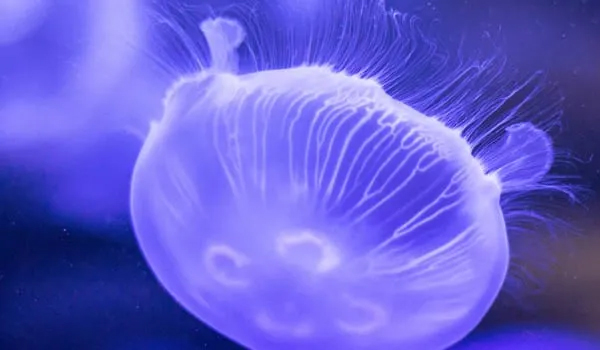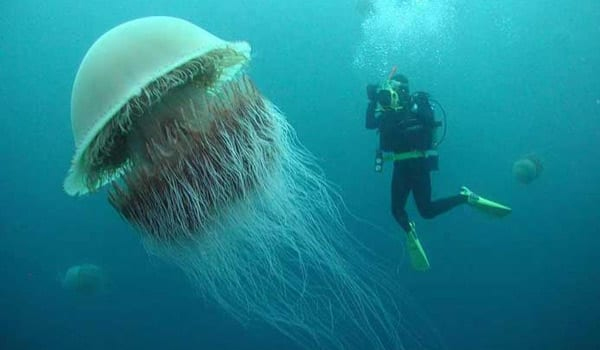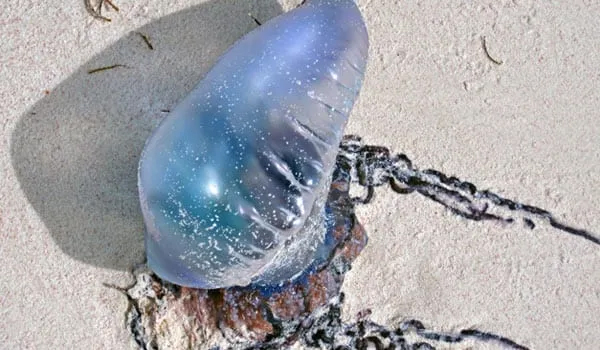Your GUIDE TO jellyfish IN CORNWALL
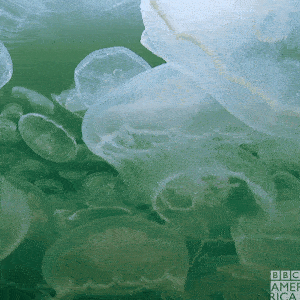
6 more unusual jellyfish facts:
they swim by pulsating their bodies through the ocean
jellyfish can clone themselves
although you might think of a jellyfish as being translucent, actually jellyfish come in many colours
This includes orange, red, yellow, pink, white, blue and green.
they live in every ocean on the planet
some jellyfish glow in the dark
collective noun
Jellyfish FAQs
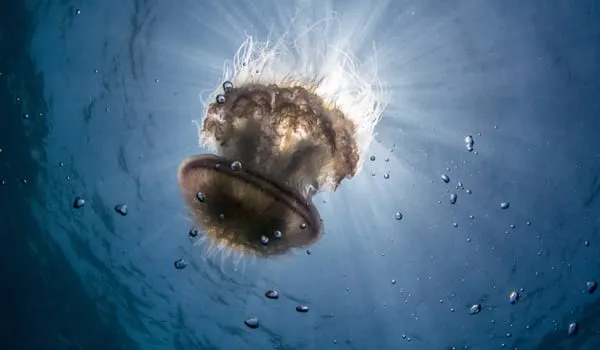
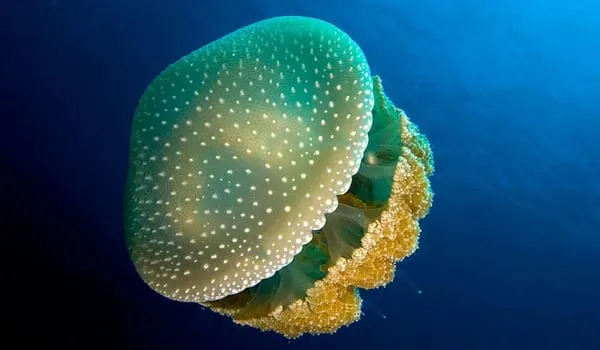
Book your jellyfish boat tour in Cornwall
types of jellyfish in Cornwall
Moon jellyfish are found all over British coasts, often being sighted in harbours and brackish water. They have an almost clear body, that will take up the colour of whatever it has just eaten (usually tiny animals or plankton). The moon jellyfish’s tentacles surround the bell and are thin and short.
Thanks to its plankton heavy diet, this jellyfish sting is mild to non-existent. There have been reports of it causing a rash, itching and sometimes reddening of the skin.
They’re easily identified by the four horseshoe markings (gonads) that are at the centre of the bell. They tend to be 25–40 cm in size and you’ll usually see them floating just below the surface of the water. They can often be mistaken for plastic bags.
The Lion’s Mane Jellyfish is the largest in the world – perhaps something you wouldn’t expect in the UK! They often grow to around 50cm across in the UK, but have been recorded to grow over 2 metres across and have tentacles over 40 metres long! Thankfully, they’re a rarer sighting and tend to be on the smaller side here.
They’re more likely to be seen in the Northern Sea and off the west coast of Scotland. However, they have been known to sporadically turn up in Cornwall, with a huge swarm appearing in 2010, thought to have been attracted by plankton blooms in the area.
They pack a powerful sting that can be dangerous to some people and will definitely hurt. It’s mostly compared to a wasp sting, but it can be more severe and causes blistering, redness and a rash. In rare cases, they can cause health complications such as muscle spasms and even heart attacks.
Recognisable by their cloudy jelly, thick oral arms and extremely long and thin, string-like tentacles, you should never touch a Lion’s Mane Jellyfish, even if you think it is dead.
The Portuguese Man-o’War isn’t actually a jellyfish. In fact, it is termed as a siphonophore, which is a colonial organism that’s made up of same-species individual animals called zooids or polyps. It’s rather interesting looking and can be described as looking like a deflating purple balloon or plastic bag, with blue ribbons attached and a pink outline.
They are native to the warmer seas of tropical and subtropical regions but will move to where the wind, current or tide takes them. In recent years, they have caused alarm by being spotted off the west coast of Britain and in Cornwall, although they have been recorded to make appearances in the country since 1999.
Their sting is fierce and can cause serious harm to those who are stung. It often leaves painful weals and can blister and cause severe redness. Two deaths caused by the Portuguese Man-o’War have been recorded in the UK. If you do happen to see one of these creatures, you should stay away and it’s recommended that you alert any beach authorities.

